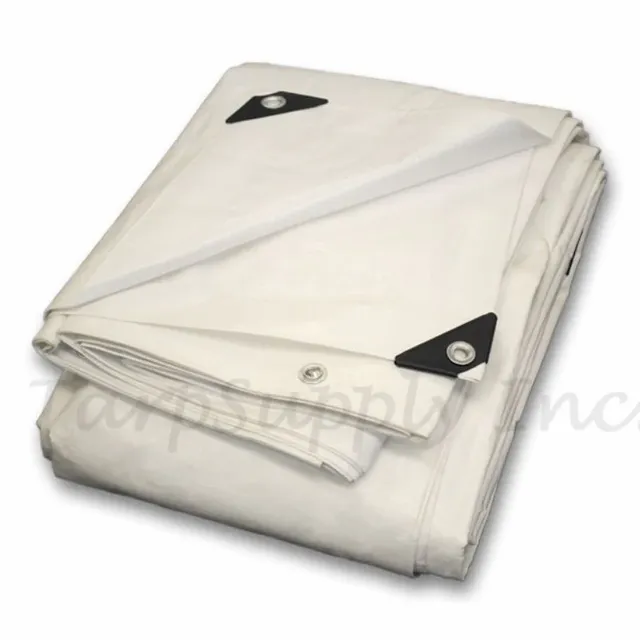In times of crisis, whether due to natural disasters or unforeseen emergencies, quick and effective response can make a significant difference. Polyethylene tarps, commonly known as poly tarps, are crucial tools in emergency shelter and relief efforts. Their versatility, durability, and affordability make them ideal for providing temporary shelter, securing supplies, and offering immediate aid. In this blog, we will explore how poly tarps can be effectively used in emergency situations to support relief efforts and enhance recovery.

Introduction to Poly Tarps for Emergency Relief
Poly tarps are made from woven polyethylene fabric, giving them strength, water resistance, and UV protection. These characteristics make them invaluable in emergency situations, where they can be used for a range of purposes from providing shelter to securing equipment. Their lightweight nature and ease of deployment make them a preferred choice for emergency responders and relief organizations.
In this blog, we will cover five key uses of poly tarps in emergency shelter and relief efforts: providing temporary shelter, creating makeshift storage, securing resources, assisting in sanitation, and offering weather protection. Each section will detail how poly tarps can be utilized effectively to support those in need during and after a crisis.
Providing Temporary Shelter
One of the most critical needs in emergency situations is providing temporary shelter for displaced individuals and families. Poly tarps can be quickly set up to create makeshift shelters that offer protection from the elements. They are often used to construct emergency tents, covering areas where traditional structures are not available or practical.
To create a temporary shelter with poly tarps, secure the tarp over a framework of poles or ropes. Ensure the tarp is large enough to cover the intended area and is anchored firmly to prevent it from being displaced by wind or rain. Poly tarps can be easily cut or modified to fit specific needs, making them adaptable to various shelter sizes. This quick setup provides essential protection against rain, sun, and wind, offering a crucial respite in times of crisis.
Creating Makeshift Storage
In emergency scenarios, there is often a need for temporary storage solutions to protect supplies, equipment, and relief materials. Poly tarps can be used to create makeshift storage areas that safeguard resources from weather conditions and unauthorized access.
To use poly tarps for storage, cover piles of supplies or equipment with the tarp and secure the edges with weights, ropes, or stakes. For larger storage needs, construct a temporary shelter or cover with multiple tarps. Ensure that the tarp is tightly secured to prevent it from being lifted or blown away. This approach helps to keep valuable resources dry and protected, ensuring they are available when needed for relief efforts.
Securing Resources
During emergency relief operations, securing resources such as food, medical supplies, and equipment is crucial for effective response and recovery. Poly tarps offer a practical solution for protecting these resources from environmental damage and contamination.
To secure resources with poly tarps, cover the items with the tarp and fasten it securely using ropes, bungee cords, or weights. For sensitive items, such as medical supplies, ensure that the tarp provides complete coverage and is adequately anchored. Poly tarps are resistant to water and UV light, helping to prevent spoilage and degradation of resources. By using tarps to secure resources, relief organizations can ensure that supplies remain intact and usable throughout the emergency response period.
Assisting in Sanitation
Maintaining sanitation is essential in emergency situations to prevent the spread of disease and ensure the health of affected individuals. Poly tarps can assist in sanitation efforts by providing surfaces for waste management, temporary facilities, and hygiene stations.
For waste management, spread a poly tarp under areas where waste is collected or handled to keep the area clean and manageable. Tarps can also be used to create temporary sanitation facilities, such as makeshift latrines, by covering and containing waste areas. Additionally, poly tarps can serve as surfaces for setting up handwashing stations or other hygiene-related activities. Their easy-to-clean surface and water resistance help to maintain sanitary conditions and support public health during crises.
Offering Weather Protection
Weather conditions can significantly impact the effectiveness of emergency relief efforts. Poly tarps offer essential weather protection for both personnel and operations, helping to ensure that relief activities can continue regardless of adverse weather.
To use poly tarps for weather protection, cover areas where relief workers are stationed or where critical operations are taking place. This includes creating shelters for personnel, covering equipment and supplies, and protecting temporary facilities. Poly tarps are designed to withstand rain, wind, and UV exposure, making them suitable for various weather conditions. By providing weather protection, poly tarps help to maintain the effectiveness and safety of relief operations, allowing responders to focus on delivering aid and support.
Conclusion
Poly tarps play a vital role in emergency shelter and relief efforts, offering versatile and practical solutions for a range of needs. From providing temporary shelter and creating makeshift storage to securing resources, assisting in sanitation, and offering weather protection, poly tarps enhance the efficiency and effectiveness of relief operations. Their durability, affordability, and ease of use make them an essential tool for emergency responders and relief organizations.
By incorporating poly tarps into emergency response plans, organizations can better manage resources, protect individuals, and maintain essential operations during crises. Investing in high-quality poly tarps and understanding their diverse applications can significantly improve the ability to respond to and recover from emergencies, ultimately supporting the well-being and safety of those affected.